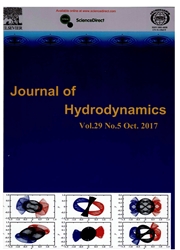

 中文摘要:
中文摘要:
热带气旋 Winnie (1997 ) 的明确的模拟被三重地嵌套的 3-D 的使用进行非静水力学的中央规模模型 MM5,在前后它的乍见陆地。Thesimulated 结果证明模型罐头很好复制 Winnie (1997 ) 的磁道,一个象 BOGUSstorm 一样旋涡在起始的模型时间在大规模第一猜测的领域里插入了。在 6 h 间隔的吝啬的轨道错误是 54.5 km,它多不到与运作的预言获得了那。在模拟和观察之间的比较接近乍见陆地放主要时间的变化也海水平压力和表面风速度罐头展示的表演成功地被捕获。眼睛墙,螺线云乐队和相应降水的特征被揭示,并且模型产量的应用也被讨论。
 英文摘要:
英文摘要:
An explicit simulation of the tropical cyclone Winnie (1997) was conducted by use of a triply-nested 3-D nonhydrostatic mesoscale model MM5, before and after its landfall. The simulated results show that the model can well reproduce the track of Winnie (1997) with a BOGUS storm-like vortex inserted in the large-scale first-guess field at the initial model time. The mean track error in a 6 h interval is 54.5 km, which is much less than that obtained with the operational prediction. Comparisons between simulation and observation near the landfall place show that the main temporal variation features of sea level pressure and surface wind speed can also be successfully captured. The characteristics of the eyewall, the spiral cloud band and the corresponding precipitation were disclosed, and the applications of the model outputs were also discussed.
 同期刊论文项目
同期刊论文项目
 同项目期刊论文
同项目期刊论文
 期刊信息
期刊信息
